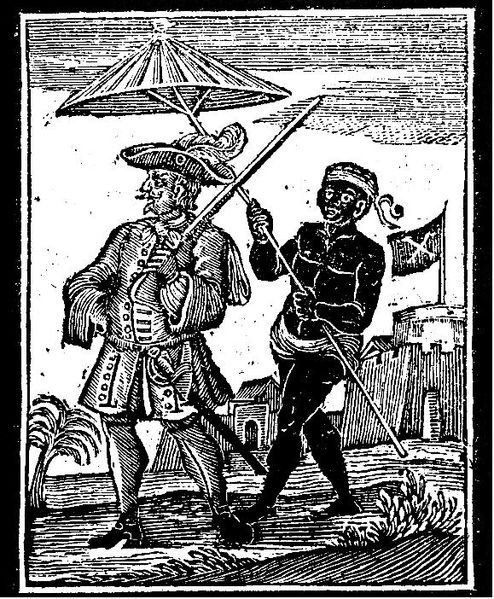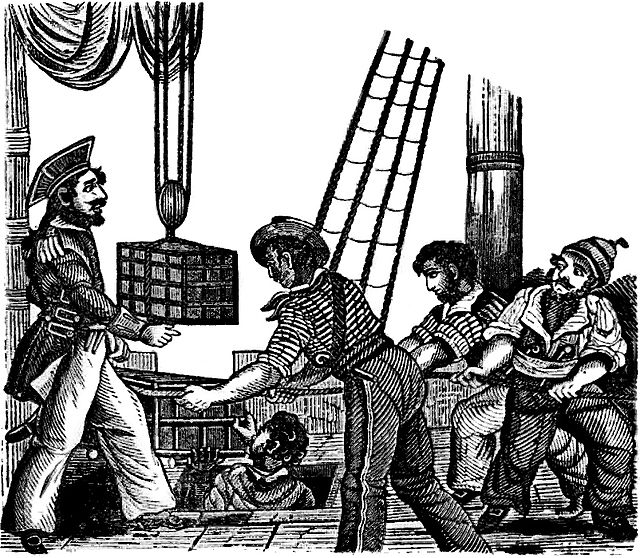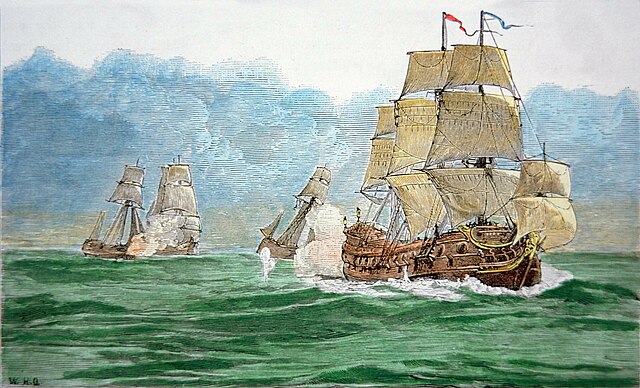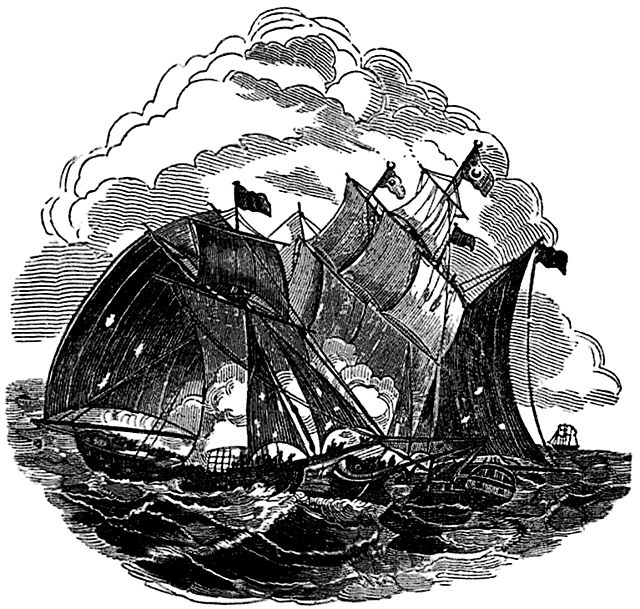Henry Every, also known as Henry Avery, sometimes erroneously given as Jack Avery or John Avery, was an English pirate who operated in the Atlantic and Indian oceans in the mid-1690s. He probably used several aliases throughout his career, including Benjamin Bridgeman, and was known as Long Ben to his crewmen and associates.
An woodcut from A General History of the Pyrates (1725)
A steel engraving by Jean Antoine Théodore de Gudin depicting the Battle of Beachy Head, a naval engagement Every likely participated in while serving in the Royal Navy
An 1837 woodcut from The Pirates Own Book by Charles Ellms depicting Henry Every receiving three chests of treasure on board his ship, the Fancy.
The proclamation for the apprehension of Henry Every, with a reward of £500 sterling (approximately £92294.70 sterling as of November 2023, adjusted for inflation) that was issued by the Privy Council of Scotland on 18 August 1696
The Ganj-i-Sawai was an armed Ghanjah dhow belonging to the Mughals. During Aurangzeb's reign, it was captured on 7 September 1695 by the English pirate Henry Every en route from present-day Mocha, Yemen to Surat, India. It was built on the order of Empress Mariam-uz-Zamani, great grandmother of Aurengzeb, after the capture of her ship named Rahimi.
A later (1933) interpretation of Ganj-i-Sawai. The ship is inaccurately depicted as an East Indiaman.
Ganj-i-Sawai being chased by Every's fleet. The ship is mistakenly depicted as an East Indiaman.
Illustration of Ganj-i-Sawai (center) being attacked.
An Indian kotiya (known as ghanjah to the Arabs). Ganj-i-Sawai would be similar to this.








